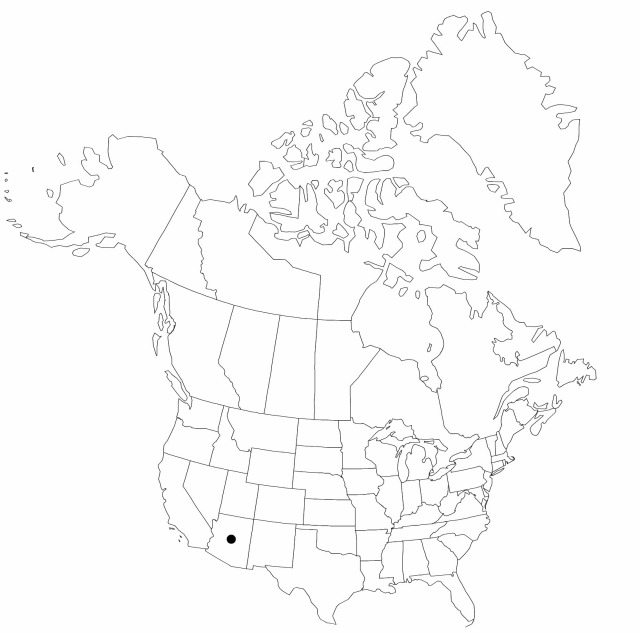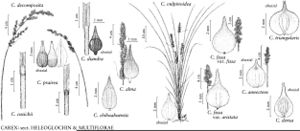Carex chihuahuensis
Bull. Torrrey Bot. Club 35: 265. 1908.
Culms to 400 cm × 4 mm, scabrous. Leaves: sheath fronts spotted red-brown, plane, apex truncate or concave; ligule rounded, to 1 mm, free limb to 0.2 mm; blades 15 cm × 5 mm, shorter than flowering stem. Inflorescences loosely paniculate, 4–10 cm × 7–15 mm, the proximal branches distinctly separate; bracts scalelike, dilated with wide hyaline edges and prominent midvein; the proximal bracts setaceous, prolonged to 10–15 mm. Scales hyaline, pale brown with prominent white-hyaline margins, apex acute or obtuse. Perigynia yellow-brown to dark brown, 5–11-veined abaxially, occasionally 3–5-veined adaxially, body ovate, 3–3.6 × 1.2–1.6 mm, base rounded or cordate, conspicuous corky tissue distending the perigynium; beak chestnut brown, 0.6–1.5 mm, apex white-hyaline, deeply bidentate. Achenes brown, ovate, 1.5 × 1 mm.
Phenology: Fruiting Jun–Jul.
Habitat: Stream banks, springs, seeps
Elevation: 1000–3000 m
Distribution

Ariz., Mexico (Chihuhua).
Discussion
Carex chihuahuensis is distinguished from the similar C. alma by the pale brown perigynia and the short-prolonged bracts; there is overlap in some character states. The relationship between these species merits further study, as does their placement in sect. Multiflorae because their achene and perigynium characteristics approach those of sect. Vulpinae.
Selected References
None.
